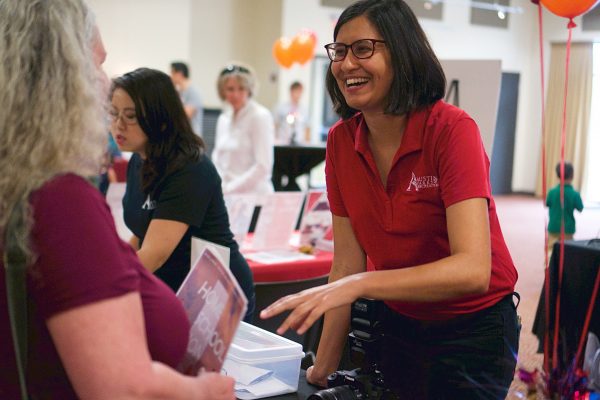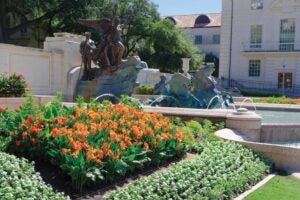Sona Shah, culture and arts education manager at the City of Austin’s Asian American Resource Center (AARC), says that her time at The University of Texas at Austin as a student — and later as a staff member — greatly influenced where she is today. During her senior year of college, Shah, who received a B.A. in Asian studies from UT, took the course Asian Women in Diaspora.
“It shaped me in later realizing the work I wanted to do with Asian American communities,” she says.
UT’s Center for Asian American Studies (CAAS) was created in 2000, the year Shah graduated.
Though Shah wishes that the center had existed when she was a student, she is grateful to have had the chance to connect with and provide guidance to Asian American students during her seven years back on campus as a CAAS staff member. Beginning as program coordinator in 2011 and eventually rising to assistant director, she helped with strategic planning, and programming. As a lecturer, she also had the opportunity to teach the course Bridging Community Through Service Learning.
Shah joined AARC in 2018. In her current role, she leads conversations on race and equity, examining how institutions can address racism — and helping people to better understand and identify it.
“My whole life experience, but especially at UT when I worked there, has helped me in this position. Having worked in ethnic studies, having these daily kinds of conversations around race and ethnicity, then coming to the city, I realized that people don’t know how to have these conversations,” Shah says.
Since its opening in 2013, AARC has provided Austin’s Asian American residents with a range of resources and a place to connect. Programs include health and wellness classes for older adults, with many classes held in Mandarin; summer youth activities; Tones: Sounds of Asian America, which highlights local Asian American musicians; Hyphenated, a book club series discussing Asian American authors; meditation classes; art exhibits; and artist talks. In fall 2020, AARC offered active bystander intervention training for the Austin community. Shah says that with the recent increase in anti-Asian violence, the organization will conduct additional bystander intervention workshops.
During the COVID-19 pandemic, AARC transitioned its programming online. With nearly 10,000 participants, including international residents, for 54 digital programs from October 2019 to September 2020, AARC has seen significant engagement.
According to 2019 U.S. Census Bureau data, Asian Americans are the fastest growing demographic group in the United States as well as in Austin, making up 8% of the city’s population.
Shah’s passion for social and environmental issues is reflected in her past work with nonprofit organizations including the Peace Corps, teaching English in Wanzhou, China; Asian Family Support Services of Austin (when it was known as Saheli) via AmeriCorps VISTA; Safe (formerly known as SafePlace); and the Texas Bicycle Coalition.
Regarding Austin’s progress on racial equity, Shah notes that the city’s creation of an equity office in 2016 resulted from community organizing, but she also acknowledges the need for continued progress.
About AARC, she adds: “I wish I had this when I was growing up — a space like this to be able to connect. As we’re seeing the demographics of Asian Americans growing, I think a lot about immigrant needs. … There’s just so much complexity to all of our experiences. I want our space to be one of inclusion, diversity and equity so that we can really make it a place of belonging for all of our different Asian communities.”




